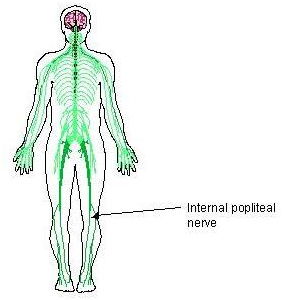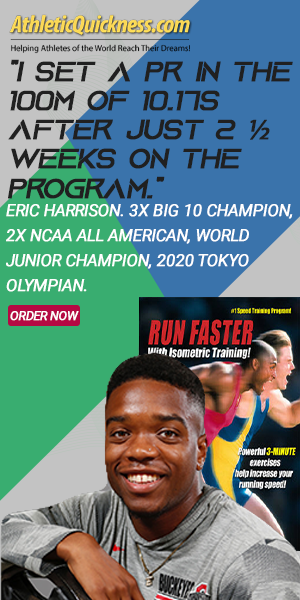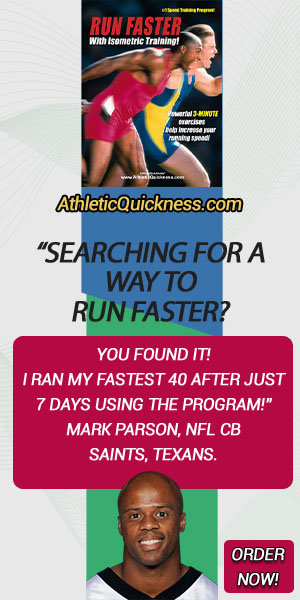There’s More to Your Calf Muscles Than You Know!
Getting your calf muscles stronger will go a long way toward helping you achieve a faster running speed. It will also go a long way toward helping you jump higher and farther. But, there’s more to appreciate about your calf muscles than simply knowing what they do and, perhaps, where they are located, but, let’s start there just in case.
The calf muscles, also known as the ankle plantarflexors as well as simply, the calves, are located in the posterior lower leg region. They are responsible for pointing the foot downward which is a movement called plantarflexion from where they get their official name. This action creates a pushing effect of the entire body, forward, while walking, jogging and running and can be seen by our athlete’s right foot in the featured picture above.
There are three muscles that make up the calves and they are: 1) gastrocnemius, 2) soleus and 3) plantaris. Interesting to note is that the plantaris muscle is absent in about 15% of the population. Perhaps you may be missing this one but, not to worry, since it’s a very tiny muscle that you probably didn’t even know it wasn’t there in the first place. These muscles can be seen in Figure 1 below:

Figure 1. Calf Muscles. Plantaris not shown.
Protect and Strengthen Your Ankle Joint
Seeing as the foot, controlled by the calf muscles, is the only part of the body to make contact with the ground, it is absolutely imperative we do all we can to strengthen the calf muscles to not only prevent injury to the foot and ankle, but also, to allow us to achieve a faster running speed when competing in sports.
Now, the most popular way to strengthen the calf muscles is by doing calf raise exercises while standing. You may have done this under a squat rack with a bar across your shoulders as you then raised up and down at the ankle joints. Another popular way to exercise your calves would be on to use a seated calf raise machine. As an athlete, you’ll want to do both but, you need to be aware that the two exercises are not equal.
Active Insufficiency
Th gastrocnemius is not only an ankle plantarflexor, but also, a knee flexor. This presents a problem for it when doing a calf raise on a seated machine known as active insufficiency. What this means is there will be some slack in the gastrocnemius during the exercise since the knee is flexed and this will prevent it from attaining a complete contraction.
The soleus, on the other hand, does not cross the knee joint and so it is an ankle plantarflexor, only. This enables it to achieve a complete contraction in the seated position since there will be no slack in the muscle like the gastrocnemius.
So, while it’s okay to do a seated calf raise and I highly recommend it, you, as an athlete, will also want to make sure you do standing calf raises, too, since this will take the slack out of the gastrocnemius and enable it to achieve a more complete contraction. By doing standing calf rasies, too, you will then be able to strengthen your calf muscles more effectively and this could only be a good thing for running.
Innervation, or Never Supply to the Calf Muscles
The nerve supply to the calf muscles is by the internal popliteal nerve. See Figure 2 below. It has four to five muscular branches and is the larger of the two terminal branches of the sciatic nerve. It descends along the posterior aspect of the thigh through the middle popliteal space to the lower part of the popliteus muscle. There it passes beneath the arch of the Soleus muscle and turns into the posterior tibial nerve.

Figure 2. Internal Popliteal Nerve
Antagonists of the Calf Muscles
Muscles that work opposite the calf muscles, or, ankle plantarflexors are the ankle dorsiflexors. These muscles include the tibialis anterior, extensor hallucis longus and extensor digitiorum longus.






